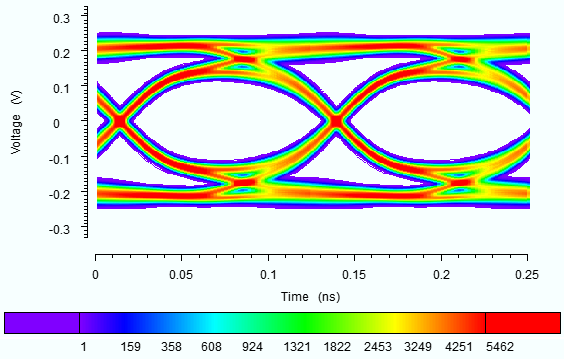The IBIS Algorithmic Modeling Interface (IBIS AMI) is a modeling standard for the efficient simulation of Gigabit serial links. IBIS AMI was developed by a consortium of EDA and semiconductor companies. It was initially introduced in the IBIS 5.0 specification in August 2008. IBIS AMI was developed to cope with the need to simulate millions of bits within a serial interconnect channel. This enables meaningful bit error rates (BER) to be predicted. New approaches were developed for this purpose, because using traditional SI simulation tools would result in excessive simulation times.
The Online Help for AMI Analysis provides an introduction to the AMI Analysis capabilities in eCADSTAR. It does not replace a full understanding of modeling high speed serial links. The proper setup of the IBIS AMI model parameters requires a good understanding of the modeled components, their functionality and behavior.
 w
w
The AMI Analysis dialog is launched by clicking Tool > AMI Analysis on the main menu in Electrical Editor. It allows you to perform the following analysis steps.
Characterize the serial channel
View the channel characteristics
Specify the AMI Analysis settings
View a Time-Domain AMI waveform
The Online Help for AMI Analysis provides an introduction to the AMI Analysis capabilities in eCADSTAR. It does not replace a full understanding of modeling high speed serial links. The proper setup of the IBIS AMI model parameters requires a good understanding of the modeled components, their functionality and behavior.

